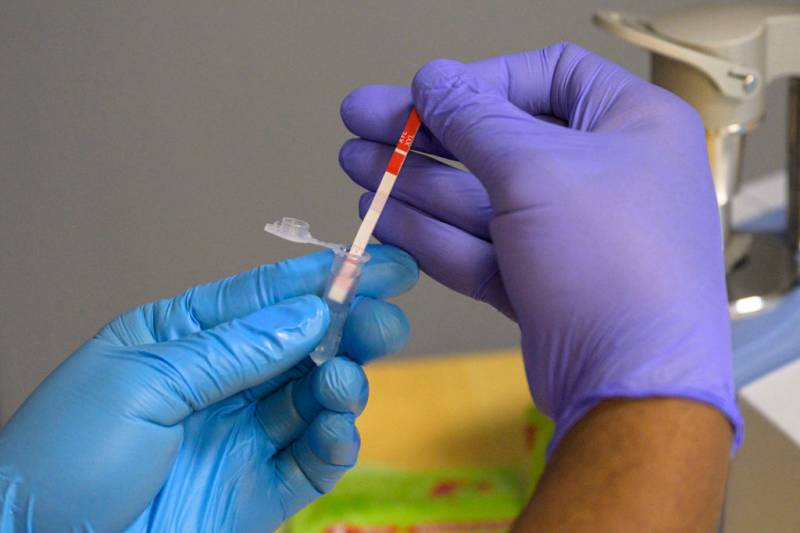“SFDPH is aware that novel synthetic drugs, including medetomidine, have been identified in drug markets in North America,” a spokesperson for the city’s Department of Public Health said in an email. “We will continue to collaborate with city departments and our nonprofit partners in monitoring for novel synthetic drugs so we may prepare supportive care options, including treatment, and quickly respond in the event they become prevalent.”
About a year ago, Dorsey submitted a similar letter asking about the city’s practices for monitoring xylazine and other adulterants found mixed with opioids that were showing up more frequently in the drug supply elsewhere around the country.
“As with my prior inquiry, my purpose is to ascertain how I may knowledgeably champion work I consider essential to protect the life and health of San Franciscans struggling with addiction,” Dorsey wrote in the inquiry letter, “and to sustain the indications of progress we’re beginning to see in the deadly drug overdose crisis facing San Francisco.”
Each month, San Francisco’s Office of the Chief Medical Examiner reports the presence of a variety of substances, including fentanyl, heroin, methamphetamine, cocaine, xylazine, bromazolam, and fluoro fentanyl in recent overdoses. In November 2023, local health officials also started testing wastewater for fentanyl, cocaine and methamphetamine, as well as all three substances in their metabolized form, to measure drug use and supply trends in the city.
The concern over medetomidine comes as U.S. overdose deaths dipped 3% in 2023 compared to 2022 — the first nationwide decline since 2018, according to data released this month from the Centers for Disease Control and Prevention.
But in San Francisco, the highest year for overdose deaths on record came in 2023, according to city data, and 258 people have died of overdose in the city this year alone.
Fentanyl, an opioid about 50 times stronger than heroin, was involved in the majority of those overdose deaths. Only 12 of this year’s overdose deaths in San Francisco involved xylazine, according to the chief medical examiner.
“We know the majority of overdose deaths are related to fentanyl, and when we get obsessed with every new scary drug politicians point out, we are missing the point,” said Laura Guzman, executive director of the National Harm Reduction Coalition. “We need to dedicate resources where there is the most need.”
As synthetic drugs have become more common around the U.S., research suggests efforts to suppress plant-based drugs like heroin and cocaine can lead to the development of cheaper and more potent drugs, which people may seek out on their own or could get cut into the supply chain.
“Without serious, sustained efforts to address the direct and root causes of non-medical opioid use, intensive supply suppression efforts that brought us fentanyl will continue to push the market towards deadlier alternatives,” reads a 2017 report in the International Journal of Drug Policy.
A common concern with sedatives like xylazine and medetomidine is that they do not respond to medications like Narcan that can reverse the effects of an opioid overdose. However, because the sedatives are often used in combination with other drugs like fentanyl, many health experts advise to still use Narcan when an opioid may be present during an overdose.
“The drug supply continues to be very unsettling and scary because we keep criminalizing new synthetics that will keep appearing, and we don’t have a safe supply,” Guzman said. “The drug supply is so tainted and reinforces itself with new synthetics, and that’s why drug checking is critical.”

